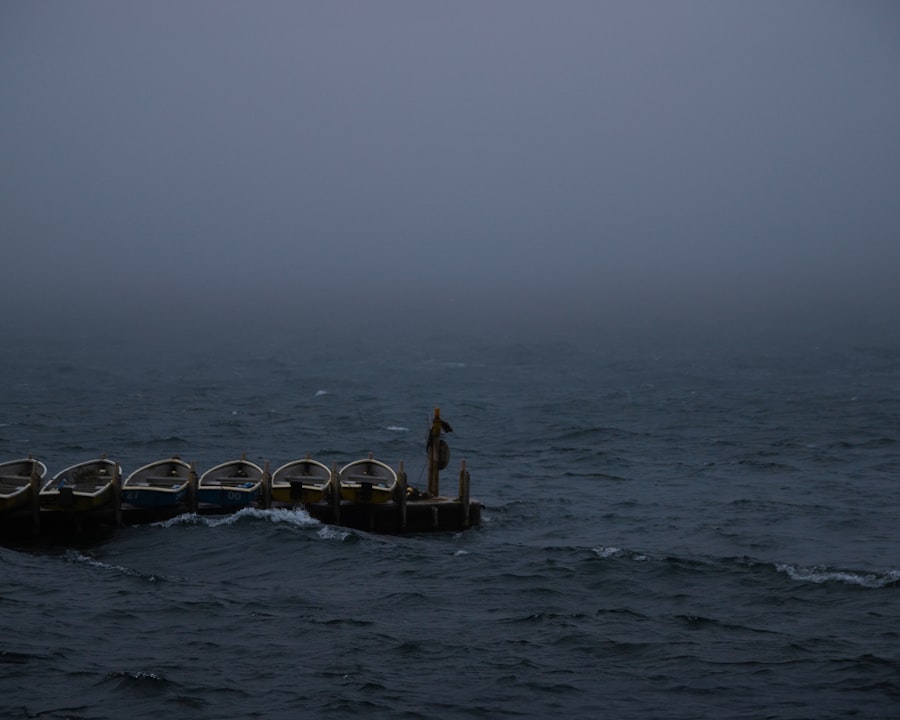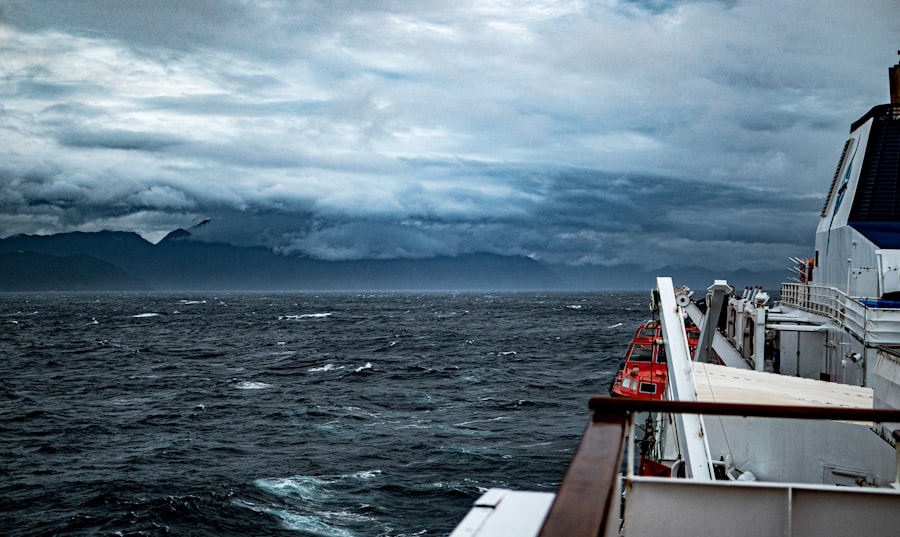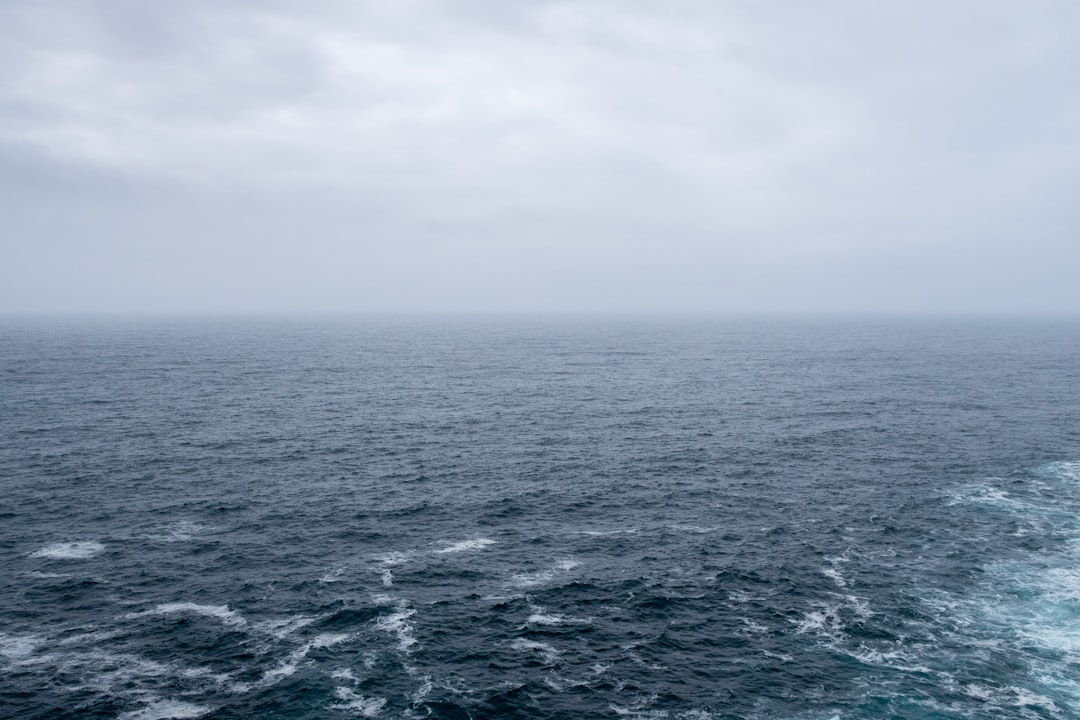The Drake Passage, a body of water that separates South America from Antarctica, is renowned for its tumultuous seas and unpredictable weather. Named after the English explorer Sir Francis Drake, who navigated these waters in the late 16th century, the passage has become a focal point for adventurers, scientists, and marine enthusiasts alike. Stretching approximately 600 kilometers (370 miles) at its widest point, the Drake Passage serves as a critical conduit for ocean currents and plays a significant role in the global climate system.
Its unique geographical and climatic characteristics make it both a challenging and fascinating area for exploration.
The confluence of the Atlantic and Pacific Oceans creates a dynamic environment where waves can reach staggering heights, and storms can develop with little warning.
For those who dare to traverse these waters, the Drake Passage offers not only a test of seamanship but also an opportunity to witness some of the most breathtaking natural phenomena on Earth. As such, it has captured the imagination of countless explorers and adventurers throughout history.
Key Takeaways
- The Drake Passage is a body of water between South America’s Cape Horn and the South Shetland Islands of Antarctica, known for its challenging sailing conditions.
- The Drake Passage is characterized by strong winds, large waves, and unpredictable weather due to its location between the Atlantic, Pacific, and Southern Oceans.
- The weather in the Drake Passage is influenced by the Antarctic Circumpolar Current and the polar front, resulting in cold temperatures, frequent storms, and rough seas.
- The Drake Passage has a rich history of exploration, with notable expeditions by famous explorers such as Sir Francis Drake and Ernest Shackleton.
- The Drake Passage is home to diverse wildlife, including penguins, seals, and whales, making it a popular destination for wildlife enthusiasts and researchers.
Geographic features that make the Drake Passage challenging
The geographic features of the Drake Passage contribute significantly to its reputation as a perilous waterway. The passage is characterized by its deep oceanic trenches and steep underwater topography, which can create sudden changes in water currents and wave patterns. The continental shelf surrounding the passage is relatively narrow, leading to rapid shifts in depth that can exacerbate rough seas.
This unique underwater landscape is a major factor in the formation of large swells and unpredictable currents that can catch even experienced sailors off guard. Additionally, the convergence of different oceanic currents in the Drake Passage adds to its complexity. The Antarctic Circumpolar Current flows eastward around Antarctica, while the North Atlantic and North Pacific currents converge in this region.
This interaction creates a turbulent environment where cold and warm waters collide, resulting in choppy seas and strong winds. Navigating through these conditions requires not only skill but also an understanding of the intricate dynamics at play in this unique marine ecosystem.
Weather and climate conditions in the Drake Passage

The weather in the Drake Passage is notoriously volatile, with conditions that can change rapidly within a matter of hours. The region is influenced by a variety of climatic factors, including the proximity to Antarctica and the surrounding oceanic currents. Storms can develop quickly, bringing with them fierce winds and heavy precipitation.
Sailors often describe the experience of crossing the Drake Passage as akin to riding a roller coaster, with sudden drops and sharp turns that can leave even seasoned mariners feeling uneasy. Temperatures in the Drake Passage can also be extreme, particularly during the winter months when they can plummet below freezing. In contrast, summer temperatures are milder but still subject to sudden shifts due to changing weather patterns.
Fog is another common occurrence in this region, further complicating navigation and visibility. The combination of these factors creates an environment that demands respect and caution from those who venture into its waters.
Historical significance and exploration of the Drake Passage
| Expedition | Year | Significance |
|---|---|---|
| Francis Drake’s voyage | 1578 | First recorded exploration of the passage |
| James Cook’s expedition | 1773 | First to cross the passage |
| Scientific exploration | 20th century | Revealed the importance of the passage for ocean currents and marine life |
The historical significance of the Drake Passage cannot be overstated. It has long been a critical route for explorers seeking to navigate between the Atlantic and Pacific Oceans. Sir Francis Drake himself was one of the first Europeans to traverse these waters during his circumnavigation of the globe in the late 1500s.
His journey not only opened up new trade routes but also paved the way for future exploration of Antarctica and its surrounding regions. Throughout history, many notable expeditions have sought to chart the waters of the Drake Passage. In the 19th century, explorers such as James Cook and Ernest Shackleton ventured into these treacherous seas in search of new lands and scientific knowledge.
Their journeys contributed significantly to our understanding of the geography and ecology of Antarctica, as well as the challenges posed by its harsh environment. The legacy of these early explorers continues to inspire modern adventurers who seek to follow in their footsteps.
Wildlife and marine life in the Drake Passage
Despite its challenging conditions, the Drake Passage is home to a rich diversity of wildlife and marine life. The nutrient-rich waters support an abundance of krill, which serves as a vital food source for various species, including whales, seals, and seabirds. Among the most iconic inhabitants of this region are humpback whales, orcas, and blue whales, which migrate through these waters in search of food during certain times of the year.
Birdwatchers are also drawn to the Drake Passage for its impressive array of seabirds. Species such as albatrosses, petrels, and skuas can often be seen soaring above the waves or diving for fish below. The presence of such diverse wildlife highlights the ecological importance of the Drake Passage as a critical habitat for many marine species.
Conservation efforts are increasingly focused on protecting this unique ecosystem from threats such as climate change and overfishing.
Notable shipwrecks and disasters in the Drake Passage

The treacherous nature of the Drake Passage has led to numerous shipwrecks and maritime disasters throughout history. One of the most infamous incidents occurred in 1914 when Ernest Shackleton’s ship, the Endurance, became trapped in pack ice while attempting to cross the passage en route to Antarctica. The crew’s harrowing struggle for survival became legendary, showcasing both human resilience and the dangers posed by these unforgiving waters.
Another notable disaster took place in 1989 when the cruise ship M.S. Explorer sank after hitting an iceberg in the Drake Passage. This incident served as a stark reminder of the risks associated with navigating these waters, even for modern vessels equipped with advanced technology.
Such tragedies underscore the importance of safety measures and preparedness for anyone venturing into this challenging maritime environment.
Modern navigation and safety measures in the Drake Passage
In recent years, advancements in navigation technology have significantly improved safety for vessels traversing the Drake Passage. Modern ships are equipped with sophisticated radar systems, GPS technology, and weather forecasting tools that allow for more accurate navigation through these treacherous waters. Additionally, many vessels now employ experienced crews trained specifically for navigating challenging maritime environments.
Safety protocols have also evolved to address the unique challenges posed by the Drake Passage. Regular communication with maritime authorities ensures that vessels are aware of current weather conditions and potential hazards. Furthermore, contingency plans are often established to prepare for emergencies, including medical evacuations or rescue operations if needed.
These measures have contributed to a safer experience for those who choose to navigate this formidable passage.
The psychological impact of crossing the Drake Passage
Crossing the Drake Passage can be as much a psychological challenge as it is a physical one. The unpredictable nature of the waters can induce anxiety among passengers and crew alike, particularly those who may be unaccustomed to rough seas. The experience often evokes feelings of vulnerability as individuals confront their own limits in an environment that is both awe-inspiring and intimidating.
For many adventurers, however, overcoming these psychological hurdles can lead to profound personal growth and transformation. The sense of accomplishment that comes from successfully navigating such a challenging route can foster resilience and confidence. Additionally, witnessing the raw beauty of nature amidst adversity can create lasting memories that shape one’s perspective on life and adventure.
Famous expeditions and journeys through the Drake Passage
Throughout history, numerous famous expeditions have traversed the Drake Passage, each contributing to our understanding of this remarkable region. One such expedition was led by Sir Ernest Shackleton during his ill-fated journey aboard the Endurance in 1914. Shackleton’s determination to reach Antarctica despite overwhelming odds has become a symbol of human endurance and leadership.
Another notable journey was undertaken by explorer James Cook in 1772 when he became one of the first Europeans to navigate these waters extensively. His voyages provided valuable insights into the geography and ecology of Antarctica while also laying the groundwork for future exploration. These expeditions not only advanced scientific knowledge but also inspired generations of adventurers to explore this remote part of the world.
The future of the Drake Passage and its impact on climate change
As climate change continues to reshape our planet, the future of the Drake Passage remains uncertain. Rising ocean temperatures and melting ice caps are altering marine ecosystems and affecting wildlife populations that depend on this unique habitat. Scientists are increasingly concerned about how these changes will impact global ocean currents and weather patterns.
Moreover, increased shipping traffic through the passage raises concerns about pollution and potential ecological disruption. As more vessels navigate these waters for tourism or trade purposes, it becomes imperative to balance economic interests with environmental conservation efforts. Protecting this vital marine ecosystem will require collaboration among governments, scientists, and conservationists to ensure that future generations can continue to appreciate its beauty and significance.
Tips for navigating the Drake Passage safely
For those planning to navigate the Drake Passage, preparation is key to ensuring a safe journey through its challenging waters. First and foremost, travelers should choose reputable tour operators with experience in navigating these conditions. Researching their safety records and crew qualifications can provide peace of mind before embarking on such an adventure.
Additionally, travelers should be prepared for varying weather conditions by packing appropriate clothing and gear. Layers are essential for adapting to sudden temperature changes, while waterproof clothing can help keep individuals dry during inclement weather. Staying informed about current weather forecasts and being aware of potential hazards will further enhance safety during transit through this remarkable yet formidable passage.
In conclusion, crossing the Drake Passage is an experience that combines adventure with respect for nature’s power. From its challenging geographic features to its rich history and diverse wildlife, this body of water continues to captivate those who dare to explore it. As we look toward the future, understanding its significance within our changing climate will be crucial for preserving its beauty for generations to come.
The Drake Passage is often considered one of the most treacherous bodies of water in the world due to its unpredictable weather, strong currents, and the convergence of the Atlantic, Pacific, and Southern Oceans. These factors create a perfect storm of conditions that can challenge even the most experienced sailors. For those interested in learning more about the geographical and historical significance of the Drake Passage, as well as other fascinating geographical phenomena, you can explore a related article on the topic by visiting MyGeoQuest. This resource provides in-depth insights into why this passage is so daunting and what makes it a unique maritime challenge.
WATCH NOW! Drake Passage: Earth’s Deadliest Waters Revealed
FAQs
What is the Drake Passage?
The Drake Passage is the body of water between the southern tip of South America and the northern tip of the Antarctic Peninsula. It connects the Atlantic and Pacific Oceans.
Why is the Drake Passage so scary?
The Drake Passage is known for its rough seas and strong winds, making it one of the most treacherous stretches of water in the world. The convergence of the Atlantic, Pacific, and Southern Oceans creates intense weather patterns and unpredictable conditions, leading to its reputation as a challenging and scary passage for sailors.
What makes the Drake Passage so dangerous?
The combination of strong winds, powerful currents, and the potential for extreme weather conditions, including storms and rough seas, makes the Drake Passage a hazardous route for ships and a challenging environment for navigation.
Are there any specific hazards in the Drake Passage?
The Drake Passage is known for its notorious waves, which can reach heights of up to 30 meters (100 feet) during storms. These waves, combined with the strong winds and currents, pose significant risks to ships and can make navigation through the passage extremely difficult.
Are there any benefits to crossing the Drake Passage?
Despite its reputation for being scary and dangerous, the Drake Passage is also known for its rich marine life and unique ecosystems. It provides an important migratory route for various species of whales, seals, and seabirds, making it a popular destination for wildlife enthusiasts and researchers. Additionally, crossing the Drake Passage is often the fastest way to reach Antarctica from South America, making it a crucial route for expeditions and scientific research.
